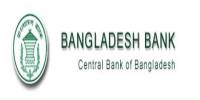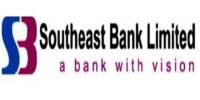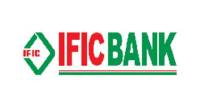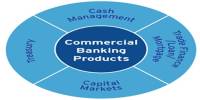Company Overview of Southeast Bank Limited
Southeast Bank Limited is a private commercial Bank, which launched its activities in Dhaka in 1995. The Bank concentrates its activities in its area of expertise and has achieved good market reputation for efficient customer service. The Bank is committed in providing training/retraining to its staff to keep them up to date with modern practices in their respective fields of work. The Bank also tries to fulfill its share in community responsibilities. By such measures the Bank intends to grow and enhance shareholders’ value.
Southeast Bank Limited pledges to maximize customer satisfaction through services and build a trusting relationship with customers, which has already stood the test of nineteen years.
Southeast Bank Limited is a scheduled commercial Bank under private sector established under the ambit of Bank Company Act, 1991 and incorporated as a Public Limited Company under Companies Act, 1994 on 12 March 1995. The Bank started commercial banking operations effective from 25 May 1995. During this short span of time the Bank has been successful to position itself as a progressive and dynamic financial institution in the country.
The Bank had been widely acclaimed by the business community, from small entrepreneurs to large traders and industrial conglomerates, including the top rated corporate borrowers for its forward – looking business outlook and innovative financial solutions. Thus within this very short period of time, it has been able to create an image and earn significant reputation in the country’s banking sector as a Bank with Vision. Presently, it has nineteen branches in operation. The Bank is envisaged to open other branches in important financial centers of the country.
Southeast Bank Limited has been licensed by the Government of Bangladesh as a Scheduled Bank in the private sector in pursuance of the policy of liberalization of banking and financial services and facilities in Bangladesh.
The founder chairman of the bank was M. A. Quesum, a prominent business man of the country. The first Managing Director was Sayed Aniasul Haque. The bank is being managed by highly professional people having wide experience in Commercial Banking.
The present Charmin is Mr. Alamgir Kabir, FCA who is also a renowned business person of the country. The present Managing Director is Mr. Shahid Hossain who has long experience in Commercial Banking System. The Bank has made significant progress with in a very short period of time due to its very competent Board of Directors, Dynamic management and introduction of various customer friendly deposit and loan products.
Performance and Achievement of Southeast Bank Limited
Capital:
The Authorized Capital of the bank is Tk. 10,000.00 million and Paid-up Capital is Tk. 8,732.86 million. The bank maintains a secured capital adequacy ratio which is 10.90% of the Risk Weighted Assets as of December 31, 2013.
Reserve:
The bank raised its reserve from Tk. 235.28 million to Tk. 13,074.71 million during the year 2013 (Till December 31, 2013), which is quite significant
Deposits:
The accumulated total deposit of the Bank was Tk. 177,519.46 million as on December 31, 2013.
Loans & Advances:
The Bank continued to extend credit facilities throughout the period to various sectors. Total Loans and Advances of the bank stood at Tk. 134,863.82 million as on December 31, 2013 The bank has extended credit facilities for “Post Import Finance”, “Export Finance‟, “Consumer Loan”, “Term Loan”, “Working Capital Finance and Overdrafts”.
Import & Export Business:
The foreign exchange business of the Bank marked an increase from that of the corresponding period. The import and export business during the year 2013 reached Tk. 131,644.82 million and Tk. 95,220.40 million respectively.
Investments:
The performance of the Investment Wing of the bank during the year 2013 was Tk. 57,589.06 million. The investment portfolio comprises of Treasury Bill, Biman Bond, Grameen Bank Bond, Prize Bonds and Shares of local companies.
Profit:
The operating profit of the Bank increased to Tk. 6,700.20 million in 2013 compared to Tk. 5,495.87 million in the year 2012.
Mission & Objective:
The mission of Southeast Bank Ltd. is to obtain a sustainable position in the banking sector of Bangladesh. It has been consolidating its position and preparing itself for the new millennium by upgrading technology, training its work force, restructuring organizationally and creating a new work culture. The purpose of the bank is to inter-mediation involving fund from saver to borrower and offering profit thereby. The general objective of the bank is to provide computerized modern banking services to the valued customers. Mainly the objectives are:
- High quality financial services with state of the art technology
- Fast customer service
- Sustainable growth strategy
- Follow ethical standards in business
- Steady return on shareholders equity
- Innovative banking at a competitive price
- Attract and retain quality human resource
- Commitment to Corporate Social Responsibility
Operational strategies and features
Organizing:
SBL believes in close monitoring and close control. The line and staff authority relationship in the bank is co-operative and emphatic. The staff performs the advisory jobs to ensure efficient management, the bank emphasizes on decentralization and delegation of authority.
Staffing:
For creating a commercial atmosphere and implementing mission through the managerial intelligence and well-dedicated workgroups, the bank continues to recruit skilled and enthusiastic personnel.
The selection and recruitment of the bank consists of
- Initial screening.
- Written tests.
- Assessment Centers.
To measure performance of the employees, the bank uses „Performance Appraisal Form‟. Besides the bank offer its employees Human Resource Development Program through both on-the-job and off-the-job training.
Leading:
To hire and to maintain qualified personnel, the bank offers different types of motivations to its employees:
- Financial (including competitive pay, bonus, profit bonus, rewards etc.)
- Non-financial (including training, promotion, status and participation)
Controlling:
SBL does not believe in traditional banking. The bank tries to two types of control techniques:
- Feed forward control.
- Feedback control.
Feed forward control technique monitor inputs into a process to ascertain whether these are as planned, if they are not the inputs are changed, in order to get the desired result. Feedback system, on the other hand, monitors outputs of a process and feed into the system to obtain the desired outputs.
Ethics and Social Responsibilities:
Southeast Bank Limited believes in banking ethics and social responsibilities. It is fully devoted to fulfilling the needs for customer satisfaction and involved in various socioeconomic development.
The objectives of the bank are, among others:
- It finances the small-scale industries to help them survive.
- Creating employment opportunities within the bank through expanding its network so that it can play some positive role in solving the unemployment problem in the country.
- Cooperating with organizations such as Grameen Bank, which are helping the poor through micro Credit and other facilities.
SBL views social responsibilities from the angles of:
Rights of Shareholders: The bank earned a total profit before tax of Tk. 6,700.20 million in the year 2013 and offered 16% cash dividend.
Responsibilities to the Employees: The bank always tries to ensure performing its responsibilities to its employees in terms of payment of competitive wage, providing the best possible working conditions, proper system of promotion, recognition, appreciation, and encouragement of special skills etc.
Responsibilities to the Customers: the bank tries to ensure maximum satisfaction of its clients.
Responsibilities to the Community: SBL performs its duty to the community by providing some special scheme such as Education Credit Scheme, Marriage Credit Scheme, and Promoting local industry.
Future Prospects and Plans of the Organization:
The regular operations and transactions of Southeast Bank Limited are fully automated and automation tools such as ATM and SWIFT are doing all the activities of trade and operations. The bank is having more than 40 ATM booths available in Dhaka Division and many more throughout the country provided by Electronic Transaction Network Limited (ETN). In order to provide round the clock and current information on the bank to the business community worldwide, this bank has Web site www.southeastbank.com.bd
Though a large number of commercial banks are already in he market to acquire business, Southeast bank nevertheless secured its position in the overall financial arena with diversified opportunities but with extensive competition. For modern banking and investment decisions the Bank is eager to make substantial investments through branch and business expansion with added capacity of resources. The bank has a plan to set up a research and development wing so as to analyze business opportunities to extending its presence in this new market and sources of investments.
Core Values
Products & Services of Southeast Bank Ltd:
Products
Deposit Schemes
- Saving (SB)
- Short Term Deposit (STD)
- Fixed Deposit
Customer Friendly Deposit Schemes
- Pension Savings Scheme (P.S.S.)
- Education Savings Scheme (E.S.S.)
- Marriage Savings Scheme (M.S.S.)
- Savers Benefit Deposit Scheme (SBDS)
- Bearer Certificate of Deposits (3,6,12 months)
- Islamic Bankining
Loan Schemes
- Consumer Credit Scheme (CCS)
- Equity & Entrepreneurship Fund (EEF)
Services
- ATM Service
- Locker Service
Export Department
- issuing export form to exporters
- Giving FDBP (foreign documents bills for purchase) number
- Matching duplicate export forms with the documents
- Providing customer services regarding export business
- Updating export issue register
- Issue pro-forma to customers
- Make amendment copy
- Making a master L/C file
An export form usually contains the following:
- Name and address of the authorize dealer
- The comodity to be exported and the code number
- Name and address of the importer and exporter
- Country of origin
- Port of shipment and date
- Port of destination
- Quality
- L/C value on foreign currency
- Terms of scale
- Bill of transportation reciept number.
Import department:
I arranged the files according to the invoice amount. Fill the import form and submit the L/C form on the Bangladesh Bank website.
- Submit the import form on bangladesh bank website
- Write application name, beneficiary, LDBP,L/C no, date, value, Tenor, Liability, Sender bank into the top of the L/C file, put LCAF number.
- Update the registry
- Update the Master L/C folder
- Update the amaenmends
To open a L/C importers needs to fill up the followings
- L/C application form
- Filled up LCA form
- Pro-forma Invoice
- Import registration certificate
- Authority to debit account
- Filled up ammendment request form
- Import form
- Insurance cover note and money reciept
- Membership certificate of chamber of commerce
- Rate flactuating undertaking
Importers must have a SBL bank account
I have to issue an import form with the following like LCAF, pro-forma invoice,commercial invoice. Sometimes there are more than one pro-forma invoice so I had to add the values and update the registry and master L/C file. If any amendments come then I had to add the values with the master L/C
Important Information Entry in the registry
- LCAF ID
- L/C no
- L/C date
- Country of origin
- Destination country
- L/C type
- L/C expiry Date
- L/C expiry place
- Last shipment date
After all these entry. Import L/C is created. And it will be updated and checked in every step of import process.
Other relevant activities
when I was working at Southeast bank I worked at front desk of the bank. There I performed random activities like
- providing account opening information to clients
- Customer Service
- Sending mail to head office when FDR & pay order is canceled
- Sending mail to clients to inform that there visa and online card is ready
- Giving inputs for pay-orders
- Giving cheque requisition
- Giving clients their cheque books
- Providing assistance to fill up carious forms
Forwarding Documentary Credit by Advising or Confirming Bank:
There are usually two banks involved in a documentary credit operation. The issuing bank and the 2nd bank, the advising bank, is usually a bank in the seller‟s country. The issuing bank asks another bank to advise or confirm the credit.
If the 2nd bank is simply “advising the credit”, it will mention that when it forwards the credit to seller, such a bank is under no commitment or obligation to pay the seller.
If the advising bank is also “confirming the credit”, this mention that the confirming bank, regardless of any other consideration, must pay accept or negotiate without recourse to seller.Then the bank is called confirming bank also.
Submission of Necessary Documents by Exporter to the Negotiating Bank:
As soon as the seller/exporter receives the credit and is satisfied that he can meet its terms and conditions, he is in a position to load the goods and dispatch them. The seller then sends the documents evidencing the shipment to the bank.
Exporter will submit those documents in accordance with the terms and conditions as mentioned in L/C. Generally the documents observed by me in the foreign exchange department are:
- Bill of exchange
- Commercial invoice
- Bill of lading / Air way bill / Truck receipt
- Certificate of origin
- Packing list
- Clean report of finding (CRF)
- USA Exporter (L/C Beneficiary)
- Insurance cover note
- Pre-shipment certificate
Making the Payment of Foreign Bill through the Reimbursing Bank:
The L/C issuing bank getting the documents checks immediately and if they are in order and meet the credit requirements; it will arrange to make payment against L/C through reimbursement bank and will send the importer the document arrival notice.
Lodgment & Retirement of shipping documents:
After scrutinizing the import negotiating document, if no discrepancy is found then it is treated to be accepted after the end of seven banking day following the day of receipt of the document under “Article 1(b) of UCPDC –500”. If any discrepancy is found then the banker inform it to the importer that whether he accept the bills with discrepancies or not. If the importer does not accept, the banker (SBL) informs it to the negotiating bank within seven banking days from the date of receipt of the documents, otherwise it is treated to be accepted and the opening bank (SBL) must bound to pay against the bill and no complain against the bill will be accepted more than 4 banking days following the date of receipt of the documents.
Export Procedures:
The import and export trade in our country are regulated by the Import and Export (Control) Act, 1950.
Under the export policy of Bangladesh the exporter has to get valid Export registration Certificate (ERC) from Chief Controller of Import & Export (CCI&E). The ERC is required to renew every year. The ERC number is to incorporate on EXP forms and other papers connected with exports.
Registration of Exporters:
For obtaining Export registration Certificate (ERC), intending Bangladeshi exporters are required to apply to the controller/ Joint Controller/ Deputy Controller/ Assistant Controller of Imports and Exports, Dhaka/ Chittagong/ Rajshahi/ Mymensingh/ Sylhet/ Comilla/ Barishal/ Bogra/ Rangpur/ Dinajpur in the prescribed form along with the following documents:
- Nationality and Assets Certificate;
- Memorandum and Article of Association and Certificate of Incorporation in case of Limited Company;
- Bank Certificate;
- Income Tax Certificate;
- Trade License etc.
Securing the Order:
After getting ERC Certificate the exporter may proceed to secure the export order. He can do this by contacting the buyers directly or through agent.
In this purpose the exporter may get help from:
- License Officer;
- Buyer‟s Local Agent;
- Export Promoting Organization;
- Bangladesh Mission Abroad;
- Chamber of Commerce (local & foreign)
- Trade Fair etc.
Signing the Contract:
After communicating buyer, exporter has to get contracted (writing or oral) for exporting exportable items from Bangladesh detailing commodity, quantity, price, shipment, insurance and marks, inspection and arbitration etc.
Receiving Letter of Credit:
After getting contract for sale, exporter should ask the buyer for Letter of Credit (L/C) clearly stating terms and conditions of export and payment.
The following are the main points to be looked into for receiving/ collecting export proceeds by means of Documentary Credit:
(1) The terms of the L/C are in conformity with those of the contract;
(2) The L/C is an irrevocable one, preferably confirmed by the advising bank;
(3) The L/C allows sufficient time for shipment and negotiation.
Terms and conditions should be stated in the contract clearly in case of other mode of payment:
- Cash in advance;
- Open account;
- Collection basis (Documentary/ Clean)
Procuring the materials:
After making the deal and on having the L/C opened in his favor, the next step for the exporter is to set about the task of procuring or manufacturing the contracted merchandise.
Shipment of goods:
Then the exporter should take the preparation for export arrangement for delivery of goods as per L/C and incoterms, prepare and submit shipping documents for Payment/ Acceptance/ Negotiation in due time.
Documents for shipment:
- EXP form,
- ERC (valid),
- L/C copy,
- Customer Duty Certificate,
- Shipping Instruction,
- Transport Documents,
- Insurance Documents,
- Invoice,
- Bills of Exchange (if required)
- Certificate of Origin,
- Inspection Certificate,
- Quality Control Certificate,
- S.P. Certificate,
Final Step:
Submission of the documents to the Bank for negotiation.
Export Financing:
Financing exports constitutes an important part of a bank‟s activities. Exporters require financial services at four different stages of their export operation. During each of these phases exporters need different types of financial assistance depending on the nature of the export contract.
- Pre-shipment credit
- Post-shipment credit
Pre-shipment credit:
Pre-shipment credit, as the name suggests, is given to finance the activities of an exporter prior to the actual shipment of the goods for export. The purpose of such credit is to meet working capital needs starting from the point of purchasing of raw materials to final shipment of goods for export to foreign country. Before allowing such credit to the exporters the bank takes into consideration about the credit worthiness, export performance of the exporters, together with all other necessary information required for sanctioning the credit in accordance with the existing rules and regulations. Pre-shipment credit is given for the following purposes:
- Cash for local procurement and meeting related expenses.
- Procuring and processing of goods for export.
- Packing and transporting of goods for export.
- Payment of insurance premium.
- Inspection fees.
- Freight charges etc.
An exporter can obtain credit facilities against lien on the irrevocable, confirmed and unrestricted export letter of credit in form of the followings:
- Export cash credit (Hypothecation)
- Export cash credit (Pledge)
- Export cash credit against trust receipt.
- Packing credit.
- Back to back letter of credit.
- Credit against Red-clause letter of credit.
Post Shipment Credit:
This type of credit refers to the credit facilities extended to the exporters by the banks after shipment of the goods against export documents. Necessity for such credit arises, as the exporter cannot afford to wait for a long time for without paying manufacturers/suppliers. Before extending such credit, it is necessary on the part of banks to look into carefully the financial soundness of exporters and buyers as well as other relevant documents connected with the export in accordance with the rules and regulations in force. Banks in our country extend post shipment credit to the exporters through:
- Negotiation of documents under L/C;
- Foreign Documentary Bill Purchase (FDBP):
- Advances against Export Bills surrendered for collection;
Negotiation of documents under L/C:
The exporter presents the relative documents to the negotiating bank after the shipment of the goods. A slight deviation of the documents from those specified in the L/C may raise an excuse to the issuing bank to refuse the reimbursement of the payment already made by the negotiating bank. So the negotiating bank must be careful, prompt, systematic and indifferent while scrutinizing the documents relating to the export.
Foreign Documentary Bill Purchase (FDBP):
Here the exporters are also made on the basis of contract between the buyer and the seller without the cover of a letter of credit. In such case, documents are delivered to the buyer through the intermediary of the foreign correspondent of the authorized dealer against payment/acceptance.
Conclusion
Modern Commercial Banking is challenging business. The rewards are modest; the penalties for bad looking are enormous. Commercial Banks are great monetary institutions, important to the general welfare of the economy more than many other financial institutions. Southeast Bank is an emerging bank. The bank has only completed seven years of banking services. At the initial stage of business, every institution has to go through the difficult path of survival. To achieve the confidence of the customers, the bank must execute some improvements in its marketing and operational areas – SBL should try to win customers faith by providing them efficient and dependable services, credit facility and updating with user friendly modern technologies. The bank should redesign all sorts of banking procedures to be more user-friendly, attractive and impressive.
Southeast Bank Limited started with a vision to be the most efficient financial intermediary in the country and it believes that the day is not far off when it will reach its desired goal. SBL looks forward to a new horizon with a distinctive mission to become a highly competitive modern and transparent institution comparable to any of its kind at home and abroad.
















